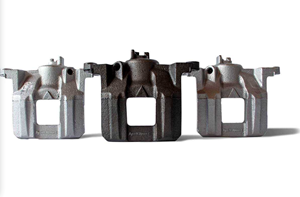Understanding and Evaluating Ultrasonic and Megasonic Cleaners
Achieving perfect uniformity within a bath has been elusive and assuring one is operating between effective levels is critical. Using the cavitation meter as a process control tool will improve both the yield and throughput of the cleaning operations.
Share
wafers, component parts with complex surface geometries, electronic devices, etc.). In a typical arrangement, a cleaning system includes a tank that holds a fluid medium such as an aqueous solution. The aqueous solution generally includes additives such as surfactants and detergents that enhance the cleaning performance of the system.
Ultrasonic Systems
In a simple ultrasonic system, a transducer mounted on the bottom generates high frequency vibrations in the cleaning tank in response to an electrical signal input. As used herein, the term ‘ultrasonic’ and its derivatives means sonic waves having a wave frequency above approximately 15 kHz and includes both the traditional ultrasonic spectrum which extends in frequency from approximately 15 kHz to 400 kHz and the more recently used megasonic spectrum which extends in frequency from about 0.5 MHz to about 3 MHz.Once generated, the transducer vibrations propagate through the fluid medium in the cleaning tank until they reach the substrate to be cleaned. More specifically, the vibrations generate an ultrasonic wave within the fluid medium wherein each point along the wave oscillates within a pressure range between a pressure maximum (compression) and a pressure minimum (rarefaction). When the pressure minimum is below the vapor pressure of the fluid medium, the ultrasonic wave can cause cavitation bubbles to form in the fluid medium.
As a result of the time-varying pressure field created by the transducer vibrations, cavitation bubbles form at sites in the fluid medium when the site pressure drops below the vapor pressure of the fluid and approaches the pressure minimum. These cavitation bubbles subsequently collapse (i.e. implode) as the site transitions from the pressure minimum to the pressure maximum. During bubble implosion, surrounding fluid quickly flows to fill the void created by the collapsing bubble and this flow results in an intense shock wave which is uniquely suited to substrate surface cleaning. Specifically, bubble implosions that occur near or at the substrate surface will generate shock waves that can dislodge contaminants and other soils from the substrate surface. The implosion of the many bubbles near the
substrate surface over time results in an intense scrubbing action that is very efficient in cleaning devices such as memory disks, semiconductor wafers, LCD devices and the like.
Cavitation Energy
In almost all cleaning applications, it is important to control the cavitation energy. When an insufficient amount of cavitation energy is provided, undesirably long process time may be required to obtain a desired level of cleaning, or in some cases, a desired level of surface cleaning may not be achievable. On the other hand, excessive cavitation energy near a substrate having delicate surfaces or components can cause substrate damage. Examples of substrate damage include the formation of pits and/or craters on the substrate surface. One factor that affects the size of the cavitation bubbles and the corresponding cavitation energy is the frequency of the ultrasonic wave. Specifically, at higher wave frequencies there is less time for the bubble to grow. The result is smaller bubbles and a corresponding reduction in cavitation energy.Another factor that affects cavitation energy is the intensity of the ultrasonic wave (i.e. wave amplitude) produced by the transducer(s). In greater detail, higher wave intensities cause each point along the wave to oscillate over a larger pressure range (between rarefaction and compression), which in turn, produces larger cavitation bubbles and larger cavitation energy. Thus, there is a direct correlation between the intensity of the ultrasonic wave, the pressure range that the fluid medium oscillates between and cavitation energy.
One factor that should be considered is the fact that the intensity of an ultrasonic wave will decrease as the wave propagates through the fluid medium. Thus, cavitation energy is generally a function of distance from the transducer. There also exists a constructive/ destructive pattern generated by the transducer(s) in the bath. Depending on the location within the bath, you may have ultrasound arriving in phase, generating constructive interference, and in another location, it will be out of phase, generating destructive interference. Tank manufactures change the pattern by sweeping the frequencies, thereby improving the uniformity within the bath. As a consequence, portions of a substrate that are located at different locations within the bath will experience different levels of cavitation energy. It has been somewhat challenging to uniformly clean a substrate.
Figure1, shows a numerical simulation of a 1 MHz megasonic bath with a square plate transducer on the bottom. The constructive/destructive pattern is evident, even though only one transducer is shown. The energy is directed primarily over the transducer because the overall dimension of the transducer is much larger than the wavelength of the ultrasound. Figure 2, shows a typical 40 kHz ultrasonic bath with three transducers placed one transducer width apart. The wavelength dimension is larger than the dimension of the transducer, and it can be seen that the energy is distributed in all directions, and a constructive/ destructive interference will occur from the multiple transducers.
Cavitation Meters
Cavitation meters measure the cavitation energy intensity and frequency within ultrasonic cleaners and the higher frequency megasonic baths, nozzle streams and single wafer and batch immersion cleaners. These meters are not hydrophones, whose sensors typically filter out the higher frequency cavitation signatures. They measure both the acoustic and cavitation energy, which then outputs the RMS of the cavitation energy intensity (units of watts per square inch) and the frequency of the driving acoustic source. The meters allow one to quantify the energy distribution within their baths, and allow baselines to be established that assure effective cleaning while minimizing any damage. The probes can also measure the directivity of the cavitation energy, which can be critical in megasonic applications. They can be used to verify if systems are working properly and determine the influence solution and load variables have on cleaning efficiencies. Table 1 is a typical output of data that is stored in the meter, which includes memory location, date, time, scanning time, average energy reading, standard deviation, minimum, maximum and the frequency readings in kHz.The aluminum foil test is a rudimentary method sometimes used to evaluate ultrasonic baths. John Kolyer from Boeing has written articles on this topic, including one that compared the use of the foil test as compared to a cavitation meter. He states in the article: “A Meter That Works” that “…the Ultrasonic Energy Meter will take over the task of monitoring tank performance.”1 His data showed a dramatic improvement in accuracy and time to evaluate a bath using the cavitation meter. His article also charts how the energy measure of the unit changes with varying power settings from a standard 40 kHz bath, which are shown in Chart 1 . It is clear that the measurements are directly proportional to the energy present within the bath. Figure 3, provided by a customer, shows a detailed mapping of a megasonic bath at mid-depth using the cavitation probe. The constructive/ destructive pattern is quite evident, as is the subsequent peaks and valleys present within the bath.
The cavitation meter has proven to be an invaluable metrology tool to quantify the energy within the ultrasonic and megasonic cleaners and to demonstrate the affects a variable has on the measurement within. Achieving perfect uniformity within a bath has been elusive and assuring one is operating between effective levels is critical. Using the cavitation meter as a process control tool will improve both the yield and throughput of the cleaning operations.
Lawrence Azar is the president and owner of PPB Megasonics (Portland, OR), which was established in 1996. He received his Bachelor of Science in engineering from Unive rsity of California at Berkeley, and a Master of Science in engineering from the Massachusetts Institute of Technology (MIT). His research at MIT focused in the nondestructive evaluation (NDE) of materials, focusing on ultra s o n i c testing, and published a number of articles in this field. He has two patents relating to ultrasonic cleaning, and is a member of the Acoustical Society of America, IEEE and SEMI. Visit the Web site at www.megasonics.com.
References
1. J. M. Kolyer, A.A. Passchier, and L. Lau, “New Wrinkles in Evaluating Ultrasonic
Tanks,” Precision Cleaning Magazine, May/June, 2000.
Related Content
Alkaline Cleaning Guide
Gregg Sanko, Senior Chemist, Oakite Products, Inc. provides an overview of the alkaline cleaning process.
Read MoreAnodizing for Bonding Applications in Aerospace
Anodizing for pre-prep bonding bridges the gap between metallic and composite worlds, as it provides a superior surface in many applications on aluminum components for bonding to these composites.
Read MoreHow to Maximize Nickel Plating Performance
The advantages of boric acid-free nickel plating include allowing manufacturers who utilize nickel plating to keep up the ever-changing regulatory policies and support sustainability efforts.
Read MoreRead Next
Delivering Increased Benefits to Greenhouse Films
Baystar's Borstar technology is helping customers deliver better, more reliable production methods to greenhouse agriculture.
Read MoreEducation Bringing Cleaning to Machining
Debuting new speakers and cleaning technology content during this half-day workshop co-located with IMTS 2024.
Read MoreMasking Solutions for Medical Applications
According to Custom Fabricating and Supplies, a cleanroom is ideal for converting, die cutting, laminating, slitting, packaging and assembly of medical-grade products.
Read More






























